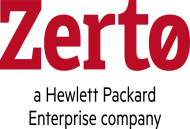Once personal data leaves our hands, how do you know it’s adequately protected? This was the reason Data Protection Day was created in the first place. Data Protection Day this year marks the 40-year anniversary of the 1981 Council of Europe treaty that established the first binding international instrument protecting individuals against abuses around the collection and processing of personal data.
As we move into 2021, the rights this treaty established are more important – and higher up the corporate agenda – than ever before. While organizations of all sizes must and should leverage data for better insights into their customers and how to serve their needs better, the accumulated digital universe of data – now upwards of 44 zettabytes and growing more than 10 times every year – means that protection should be the mandatory starting point for any interaction involving data. It is critical to have the right solution in place to protect your business, and the data that you possess, from any disruption. Preventing outages and downtime that could expose data, whether planned or unplanned, must be mitigated to avoid risking data loss and misuse.
Take, for example, the malware attack on SolarWinds. According to a Reuter’s report, a recent attack on SolarWinds went undetected for months and left not only the company, but also its Fortune 500 clients’ and the U.S. federal government’s data exposed.
A robust data protection strategy keeps you empowered to take immediate action when disruptions occur. This strategy requires two key components: continuous availability and application and data mobility.
Continuous Availability
The most important focus for most businesses is delivering an ‘always-on’ customer experience – no matter what planned or unplanned changes happen in the infrastructure. Continuous availability keeps customers connected to their data and applications. Think of it as having backup power or a generator for your IT.
Backups have been an important part of any IT strategy for years. Copying data and applications to store offsite allows recovery of data no matter what happens to the production environment.
However, most modern technologies are inadequate. Periodic backups that only provide a snapshot in time leave potential data gaps and are not compatible with demands for recovery point objectives (RPOs) of seconds and recovery time objectives (RTOs) of minutes. This, coupled with the complexity that comes with legacy solutions, means that you should be integrating journal-based continuous data protection that’s accessible across multiple hypervisors, storage, and cloud platforms.
Continuous availability means just that – it’s uninterrupted. Whatever happens, be it a cyberattack, flood or planned outage, both you and your customers stay ‘on’ and data is protected against any disruption or misuse.
Application and Data Mobility
Application and data mobility —also called workload mobility—allows you to move applications and data while keeping them fully protected. This can mean anything from migrations, to mergers and acquisition consolidations, or a new initiative being rolled out.
Although workload mobility is not a new concept, many IT practitioners are moving applications and data around more regularly now due to the adoption of public cloud. With a myriad of public clouds and cloud service providers on the market, it is increasingly important that IT teams have easy, seamless, and risk-free workload mobility to unlock on-premises environments that can extend data centers to the cloud.
Together, these two critical elements will ensure your organization can withstand any disruption and keep your data and applications truly protected. Combine these with a platform that offers analytics and full automation and orchestration, and your organization will have the elements required to proactively secure your data and applications. Explore more about protecting your data in our IDC Technology Spotlight Report: Continuous Data Protection: A New Era of Backup and Recovery or visit zerto.com to see how we can help you.









